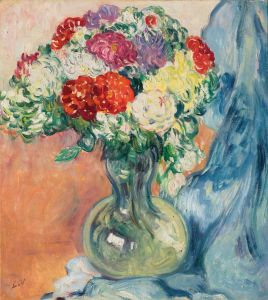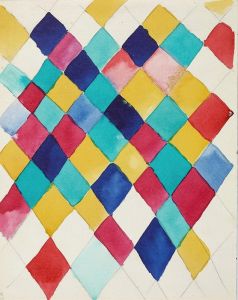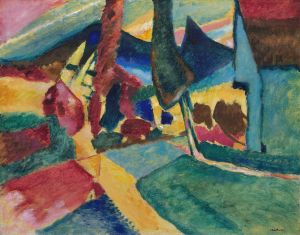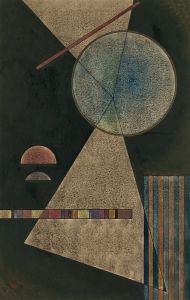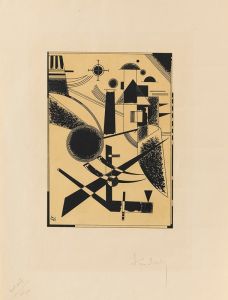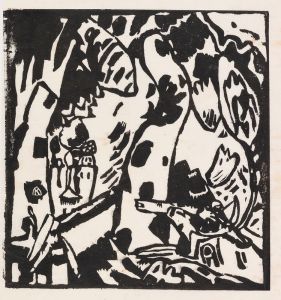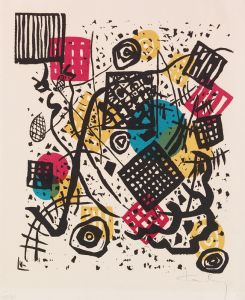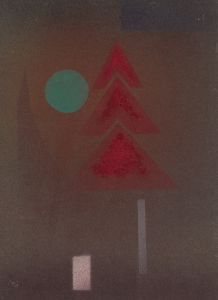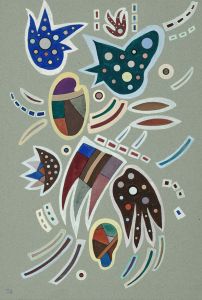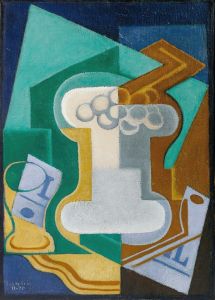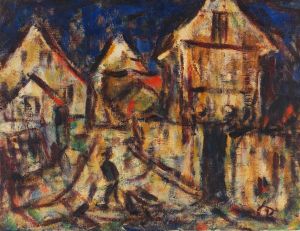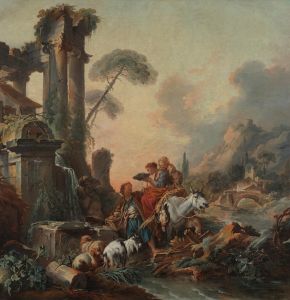
Kochel—Dorfkirche
A hand-painted replica of Wassily Kandinsky’s masterpiece Kochel—Dorfkirche, meticulously crafted by professional artists to capture the true essence of the original. Each piece is created with museum-quality canvas and rare mineral pigments, carefully painted by experienced artists with delicate brushstrokes and rich, layered colors to perfectly recreate the texture of the original artwork. Unlike machine-printed reproductions, this hand-painted version brings the painting to life, infused with the artist’s emotions and skill in every stroke. Whether for personal collection or home decoration, it instantly elevates the artistic atmosphere of any space.
Wassily Kandinsky, a pioneering figure in abstract art, painted "Kochel—Dorfkirche" in 1909. This work is one of the many pieces that mark Kandinsky's transition from figurative to abstract art. Kandinsky was born in Moscow in 1866 and later moved to Munich, where he became a central figure in the development of modern art.
"Kochel—Dorfkirche" translates to "Kochel—Village Church," and it reflects Kandinsky's interest in the Bavarian landscape and architecture. The painting depicts a village church in Kochel am See, a small town in Bavaria, Germany. This region was significant to Kandinsky, as he spent considerable time there, drawing inspiration from its natural beauty and serene environment.
The painting is characterized by its vibrant use of color and simplified forms, which are hallmarks of Kandinsky's evolving style during this period. The church is depicted with bold, expressive brushstrokes and a palette that includes bright yellows, blues, and greens. These colors are not used realistically but rather to convey emotion and a sense of spirituality, which was a central theme in Kandinsky's work.
Kandinsky's approach to color was influenced by his synesthetic experiences, where he could perceive colors as sounds and vice versa. This unique perception allowed him to create compositions that were not just visual but also evocative of musical harmony. In "Kochel—Dorfkirche," the interplay of colors and forms creates a dynamic and rhythmic composition, inviting viewers to experience the painting on a sensory level.
The painting also reflects Kandinsky's interest in theosophy and spirituality. He believed that art should transcend the material world and express deeper spiritual truths. This belief is evident in "Kochel—Dorfkirche," where the church, a symbol of spiritual refuge, is rendered in a way that emphasizes its otherworldly presence.
"Kochel—Dorfkirche" is part of a series of works that Kandinsky created during his time in Murnau, another town in Bavaria. This period was crucial for his artistic development, as he experimented with abstraction and began to move away from representational art. His collaboration with fellow artists such as Gabriele Münter, Alexej von Jawlensky, and Marianne von Werefkin during this time also played a significant role in shaping his artistic vision.
The painting is housed in the Städtische Galerie im Lenbachhaus in Munich, which holds an extensive collection of works by Kandinsky and other members of the Blue Rider (Der Blaue Reiter) group. This group, co-founded by Kandinsky in 1911, was instrumental in the development of abstract art and sought to explore the spiritual and expressive potential of art.
In summary, "Kochel—Dorfkirche" by Wassily Kandinsky is a significant work that captures the artist's transition towards abstraction and his exploration of color, form, and spirituality. The painting not only reflects Kandinsky's personal experiences and beliefs but also marks an important moment in the history of modern art.





